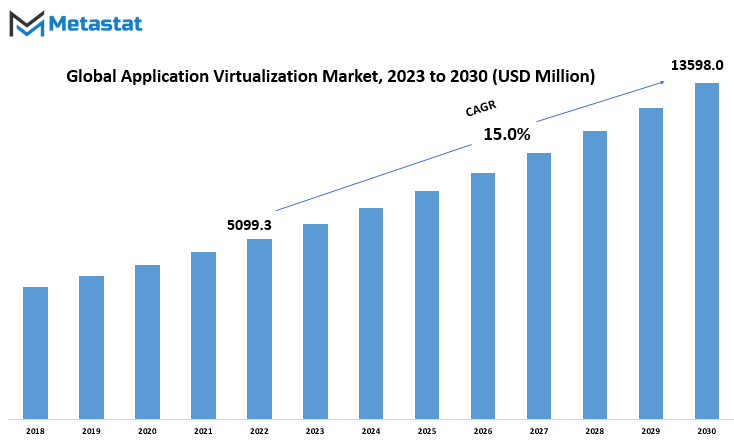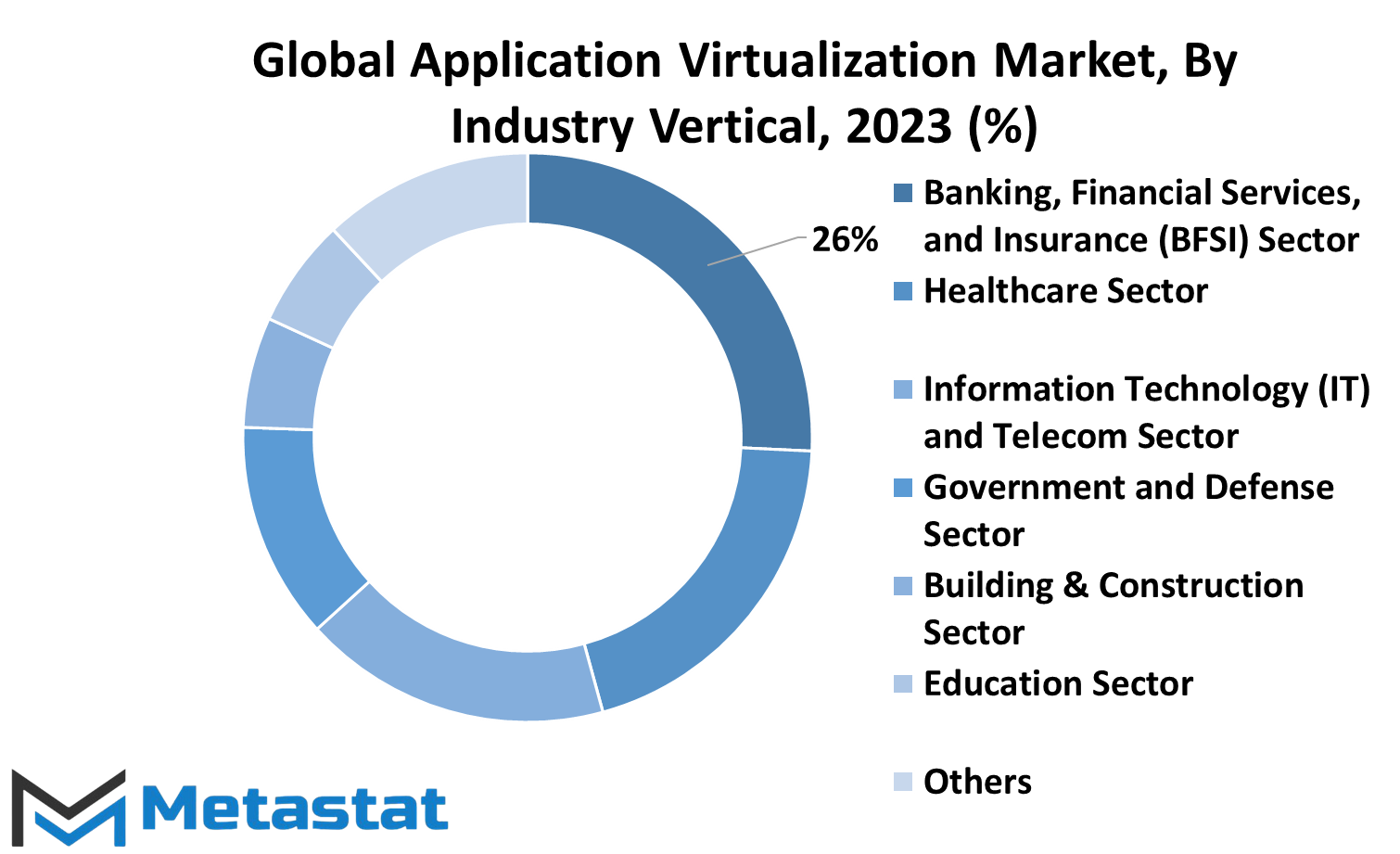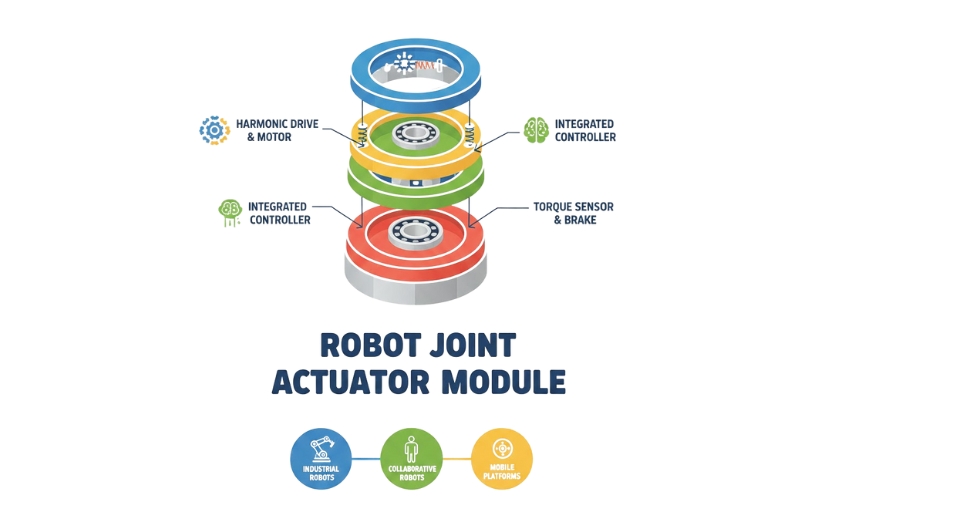MARKET OVERVIEW
In modern technology, the Global Application Virtualization market emerges as a transformative force, reshaping the way organizations deploy and manage their software applications. Application virtualization, at its core, involves the encapsulation of software from the underlying hardware, enabling seamless execution across diverse computing environments.
One of the distinctive features of the Global Application Virtualization market is its ability to enhance flexibility and efficiency in software deployment. Traditional methods often grapple with compatibility issues and dependency constraints, hindering the smooth installation and operation of applications. In contrast, application virtualization liberates software from these shackles, allowing for a more streamlined and adaptable deployment process.
Furthermore, the Global Application Virtualization market plays a pivotal role in optimizing resource utilization. By decoupling applications from the underlying hardware and operating system, organizations can achieve a higher degree of consolidation and resource sharing. This not only contributes to cost savings but also facilitates a more sustainable and scalable IT infrastructure.
Security, a paramount concern in today's digital landscape, is another area where the Global Application Virtualization market makes significant strides. The encapsulation of applications creates isolated environments, reducing the risk of security breaches and unauthorized access. This is particularly crucial in sectors where sensitive data and proprietary information are at the forefront of operational priorities.
The market's impact is not limited to large enterprises; it extends to the realm of user experience. Application virtualization enables users to access software seamlessly, regardless of their physical location or the device they are using. This newfound flexibility enhances productivity and collaboration, fostering a more dynamic and responsive work environment.
As the Global Application Virtualization market continues to evolve, it becomes increasingly intertwined with other technological trends such as cloud computing and edge computing. The synergy between these advancements amplifies the market's capabilities, opening new avenues for innovation and integration.
The Global Application Virtualization market stands as a transformative force in the technological landscape, revolutionizing how organizations approach software deployment and management. Its impact extends beyond mere operational efficiency, touching upon aspects of security, user experience, and the broader integration of cutting-edge technologies. As we navigate the intricacies of the digital era, the Global Application Virtualization market remains a beacon of adaptability and optimization, shaping the future of IT ecosystems worldwide.
Global Application Virtualization market is estimated to reach $13598.0 Million by 2030; growing at a CAGR of 15.0% from 2023 to 2030.

GROWTH FACTORS
The global Application Virtualization market experiences growth driven by several key factors. These factors contribute to the market's expansion and are pivotal in understanding its trajectory. On the flip side, challenges can impede this growth, presenting hurdles that need consideration. However, amidst these challenges lie opportunities, promising avenues for the market to capitalize on in the future.
At the core of the market's growth are factors that act as catalysts, propelling it forward. These growth factors, often multifaceted, encapsulate the various elements that fuel the increasing demand for application virtualization solutions. They could range from the ever-expanding need for efficient and scalable software solutions to the continuous advancements in technology that elevate the capabilities of application virtualization.
Conversely, challenges pose potential threats to the market's growth trajectory. These obstacles, be they technological, regulatory, or economic in nature, have the capacity to hinder the seamless progression of the Application Virtualization market. It is imperative to identify and address these challenges to ensure sustained and resilient growth.
Overcoming challenges prompts the market to adapt, fostering resilience and fortifying its foundations. As the saying goes, "necessity is the mother of invention," and in the face of challenges, the market is compelled to innovate, leading to improved solutions and practices.
Amidst the ebb and flow of challenges and growth factors, lies opportunities. Identifying and seizing these opportunities is crucial for the market's continued expansion. Opportunities could manifest in various forms, such as unmet needs in the market, emerging technologies that complement application virtualization, or untapped geographical markets.
The dynamics of the global Application Virtualization market are shaped by a delicate interplay of growth factors, challenges, and opportunities. Understanding these elements is essential for stakeholders to navigate the market successfully. It's not just about mitigating challenges but leveraging them as stepping stones for growth and capitalizing on opportunities to ensure a robust and flourishing future for the Application Virtualization market.
MARKET SEGMENTATION/REPORT SCOPE
By Component
The global Application Virtualization market is a dynamic landscape with various components contributing to its overall structure. These components are pivotal in shaping the market’s functionality and addressing the diverse needs of users.
One key facet is the segmentation into Solution and Service. In 2022, the Solution segment held substantial value at 2547 USD Million, reflecting its integral role in the market. Solutions in the realm of application virtualization provide the technological backbone, offering tools and platforms that facilitate the virtualization process. This includes creating a virtualized environment for applications, ensuring seamless integration, and optimizing performance.
Complementing the Solution segment is the Service segment, which mirrors the Solution in its valuation at 2547 USD Million in the same period. Services in the context of application virtualization encompass a spectrum of offerings. These may include consulting, implementation, maintenance, and support services. Service providers play a crucial role in assisting businesses in adopting and optimizing application virtualization solutions, ensuring a smooth and efficient transition.
Together, the Solution and Service segments form the bedrock of the Application Virtualization market. The robust valuation of both underscores the recognition of their significance in meeting the demands of a tech-driven landscape. As businesses increasingly turn to application virtualization to enhance efficiency and flexibility, these segments play a pivotal role in shaping the trajectory of the global market.
By Deployment Mode
In the global Application Virtualization market, the mode of deployment stands out as a critical factor shaping its dynamics. The market unfolds with a dichotomy in deployment modes, primarily categorized as Public Cloud and Private Cloud.
Public Cloud, a prominent player in this dichotomy, held a valuation of 2583.2 USD Million in 2022. This signifies its prevalence and acceptance among users seeking virtualized applications accessible through shared cloud infrastructure. Public Cloud, being a cost-effective and scalable solution, appeals to a broad spectrum of businesses, contributing significantly to the overall market valuation.
On the other side of the spectrum, the Private Cloud segment, valued at 1863.6 USD Million in 2022, carves its own niche. Favored by those who prioritize data security and control, Private Cloud deployment ensures a dedicated and isolated environment. This appeals particularly to enterprises dealing with sensitive information and stringent regulatory requirements.
The dichotomy between Public and Private Cloud deployment modes is not just about where applications reside but also about meeting diverse user needs. Public Cloud caters to those embracing the shared infrastructure model for its efficiency and flexibility, while Private Cloud addresses concerns related to data security and regulatory compliance.
The choice between Public and Private Cloud deployment modes in the Application Virtualization market reflects the varied preferences and priorities of users. It’s not merely a technical decision but a strategic one, aligning with the specific requirements and considerations of businesses as they navigate the landscape of virtualized applications.
By Enterprise Size
The global Application Virtualization market exhibits a nuanced segmentation based on enterprise size, reflecting the varied needs and dynamics within different business scales. This segmentation categorizes enterprises into two main groups: Large Enterprises and Small and Medium-sized Enterprises (SMEs).
Large Enterprises, a formidable force in the market, were valued at 3161.9 USD Million in 2022. This segment signifies the substantial adoption of application virtualization solutions by major corporations with expansive operations and intricate IT infrastructures. For these large enterprises, the integration of virtualization technologies becomes integral for enhancing operational efficiency and ensuring seamless application deployment.
On the other end of the spectrum, we have the SMEs segment, valued at 1284.9 USD Million in 2022. This segment encapsulates the diverse array of small and medium-sized businesses, each with its unique set of challenges and priorities. For SMEs, the adoption of application virtualization presents an opportunity to streamline IT operations, reduce costs, and enhance scalability without the resource-intensive infrastructure of larger enterprises.
The dichotomy between Large Enterprises and SMEs in the Application Virtualization market reflects the adaptability and scalability of virtualization solutions. Large enterprises leverage these technologies to manage the complexity of their extensive operations, while SMEs find value in the efficiency and cost-effectiveness that virtualization brings to their more compact IT environments.
The market's segmentation by enterprise size underscores the widespread applicability of application virtualization across businesses of varying scales. Whether navigating the intricate IT landscape of a large corporation or streamlining operations in a smaller enterprise, application virtualization proves to be a versatile solution, catering to the diverse needs of businesses in today's tech-driven landscape.
By Industry Vertical
The global Application Virtualization market is characterized by its diversified applications across various industry verticals. This market’s versatility is exemplified by its integration into key sectors that drive economic and societal functions.
The Banking, Financial Services, and Insurance (BFSI) sector stand out as one of the primary adopters of Application Virtualization solutions. In a sector that relies heavily on secure and efficient software applications for financial transactions and data management, virtualization technology ensures streamlined operations and heightened data security.
The Healthcare sector is another significant player in the adoption of Application Virtualization. Here, the technology is instrumental in managing complex medical records, facilitating efficient communication, and enhancing overall operational efficiency within healthcare institutions.
The Information Technology (IT) and Telecom sector, being at the forefront of technological advancements, leverage Application Virtualization to enhance software deployment, streamline processes, and ensure seamless communication. This sector’s reliance on robust and flexible IT infrastructure makes virtualization a key enabler.
Governments and Defense sectors globally recognize the strategic importance of Application Virtualization. By deploying virtualized applications, these sectors achieve enhanced security measures, efficient data management, and streamlined processes critical for effective governance and defense operations.
In the Building & Construction sector, Application Virtualization plays a crucial role in project management and collaboration. Virtualized applications facilitate real-time data sharing, collaboration among stakeholders, and efficient project execution.
The Education sector embraces Application Virtualization to enhance the learning experience. Virtualized applications enable seamless access to educational resources, collaborative tools, and innovative teaching methods, fostering a more interactive and dynamic learning environment.
The term Others encapsulates the broader spectrum of industry verticals that also benefit from Application Virtualization. This category could include manufacturing, retail, and other sectors where streamlined software applications and data management are integral to operations.
The global Application Virtualization market is not confined to a single sector but spans across key industries, each reaping the benefits of enhanced efficiency, improved security, and streamlined operations. The widespread adoption of Application Virtualization underscores its adaptability and relevance in diverse industry contexts, showcasing its role as a pivotal technology shaping the contemporary digital landscape.

REGIONAL ANALYSIS
In exploring the landscape of the global Application Virtualization market, a crucial facet to consider is the regional analysis, offering insights into the market's performance across different geographic locations.
Regions play a significant role in shaping market dynamics, with varying economic conditions, technological adoption rates, and regulatory environments influencing the demand for application virtualization solutions. Let's delve into the key aspects of regional analysis within this market.
North America emerges as a pivotal player in the Application Virtualization market. The region's robust technological infrastructure, coupled with a high level of digitalization across industries, fosters a conducive environment for the adoption of application virtualization solutions. The market in North America is characterized by a strong demand from enterprises aiming to optimize their operations through virtualized applications.
Moving across the Atlantic, Europe presents its own set of dynamics in the Application Virtualization landscape. With a diverse economic landscape and varying degrees of technological maturity among European countries, the market experiences nuanced patterns. Western European countries, with their advanced IT infrastructure, showcase a more pronounced adoption of application virtualization compared to their Eastern counterparts. This regional variance underscores the importance of considering the unique characteristics of each European subregion.
Asia-Pacific, on the other hand, stands out as a region with tremendous growth potential in the Application Virtualization market. The increasing digitization efforts across emerging economies, coupled with a burgeoning tech-savvy population, contribute to the rising demand for application virtualization solutions. Countries like China and India are witnessing a surge in adoption as businesses recognize the efficiency gains offered by virtualized applications.
Latin America and the Middle East & Africa exhibit their own distinct patterns within the global landscape. While Latin America experiences a gradual uptake of application virtualization, influenced by economic factors and industry-specific demands, the Middle East & Africa grapples with a mix of opportunities and challenges. The adoption of virtualization solutions varies across countries within these regions, reflecting the diverse economic and technological landscapes.
Understanding the regional dynamics is pivotal for market participants, allowing them to tailor their strategies based on the unique demands and preferences of each geographic area. It's not a one-size-fits-all scenario; rather, a nuanced approach that factors in the specific conditions of each region proves most effective.
The regional analysis of the global Application Virtualization market unveils a diverse tapestry of opportunities and challenges. From the tech hubs of North America to the burgeoning markets of Asia-Pacific, each region contributes to the overall dynamics of the market in its own way. Market players navigating this landscape must be attuned to the regional nuances, recognizing that success requires a thoughtful and adaptable approach that aligns with the distinct conditions of each geographic area.
COMPETITIVE PLAYERS
In the expansive landscape of the global Application Virtualization market, key players are pivotal in steering the industry's trajectory. Among these influencers, Microsoft Corporation and Symantec stand out as notable entities.
Microsoft Corporation, a stalwart in the technology domain, plays a significant role in shaping the contours of the Application Virtualization market. With its extensive suite of software solutions, Microsoft has established itself as a key player, offering virtualization solutions that cater to diverse needs. The company's presence in this arena underscores the importance of a comprehensive approach to application virtualization.
Symantec, another major player, contributes significantly to the dynamics of the Application Virtualization industry. Renowned for its cybersecurity solutions, Symantec extends its influence to virtualization, emphasizing the integral role security plays in the virtual application environment. Symantec's foray into this market is a testament to the interconnected nature of security and application virtualization, addressing concerns and challenges in tandem.
Both Microsoft Corporation and Symantec bring distinctive strengths to the Application Virtualization market. Microsoft's broad reach and diverse product offerings contribute to a holistic ecosystem, while Symantec's focus on security aligns with the imperative need for safeguarding virtualized applications. Together, these key players shape the market's trajectory, setting benchmarks and influencing the adoption of application virtualization solutions across industries.
As the global business landscape continues to embrace digital transformation, the role of key players like Microsoft and Symantec in the Application Virtualization market becomes increasingly vital. Their contributions extend beyond individual products, influencing industry trends and standards. In this ever-evolving technological landscape, the presence and strategies of these key players become defining elements that shape the trajectory of the Application Virtualization market.
Application Virtualization Market Key Segments:
By Component
- Solution
- Service
By Deployment Mode
- Public Cloud
- Private Cloud
By Enterprise Size
- Large Enterprises
- Small and Medium-sized Enterprises (SMEs)
By Industry Vertical
- Banking, Financial Services, and Insurance (BFSI) Sector
- Healthcare Sector
- Information Technology (IT) and Telecom Sector
- Government and Defense Sector
- Building & Construction Sector
- Education Sector
- Others
Key Global Application Virtualization Industry Players
- Microsoft Corporation
- Symantec
- Broadcom Inc. (Vmware)
- Citrix Systems
- Red Hat, Inc.
- Oracle Corporation
- Dell Inc.
- Google LLC
- Micro Focus
- Parallels International GmbH
- Systancia
- Sangfor Technologies
- Accops Systems Private Limited
- SAP SE
- Calsoft.Inc.
WHAT REPORT PROVIDES
- Full in-depth analysis of the parent Industry
- Important changes in market and its dynamics
- Segmentation details of the market
- Former, on-going, and projected market analysis in terms of volume and value
- Assessment of niche industry developments
- Market share analysis
- Key strategies of major players
- Emerging segments and regional growth potential








 US: +1 3023308252
US: +1 3023308252






